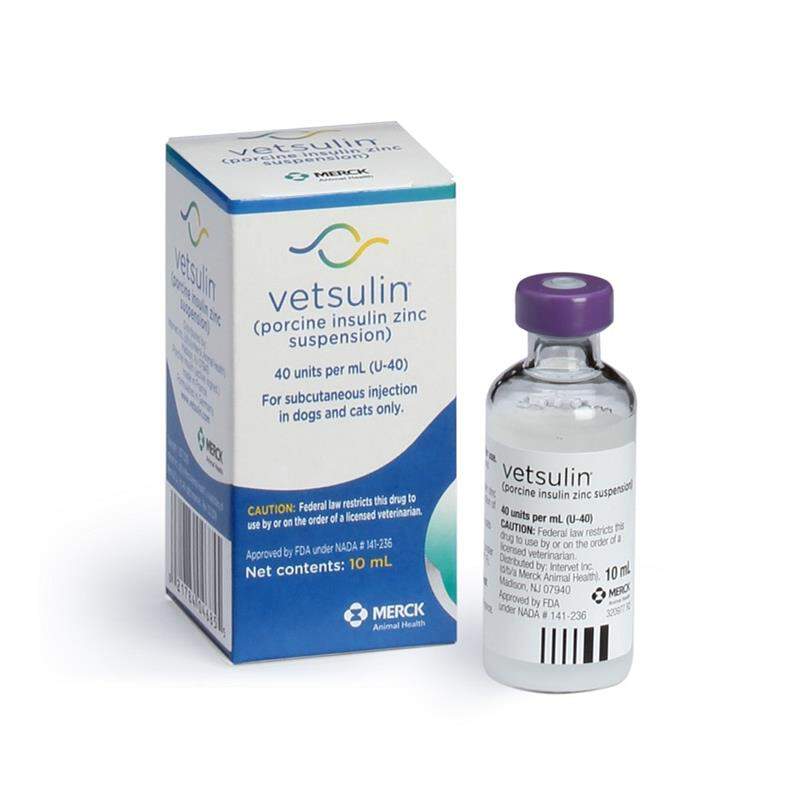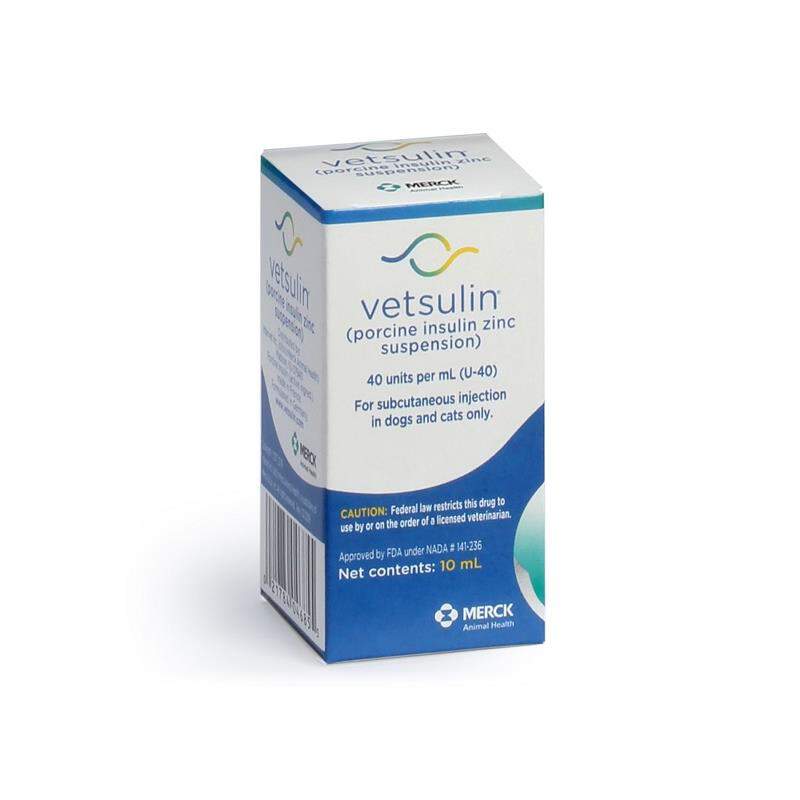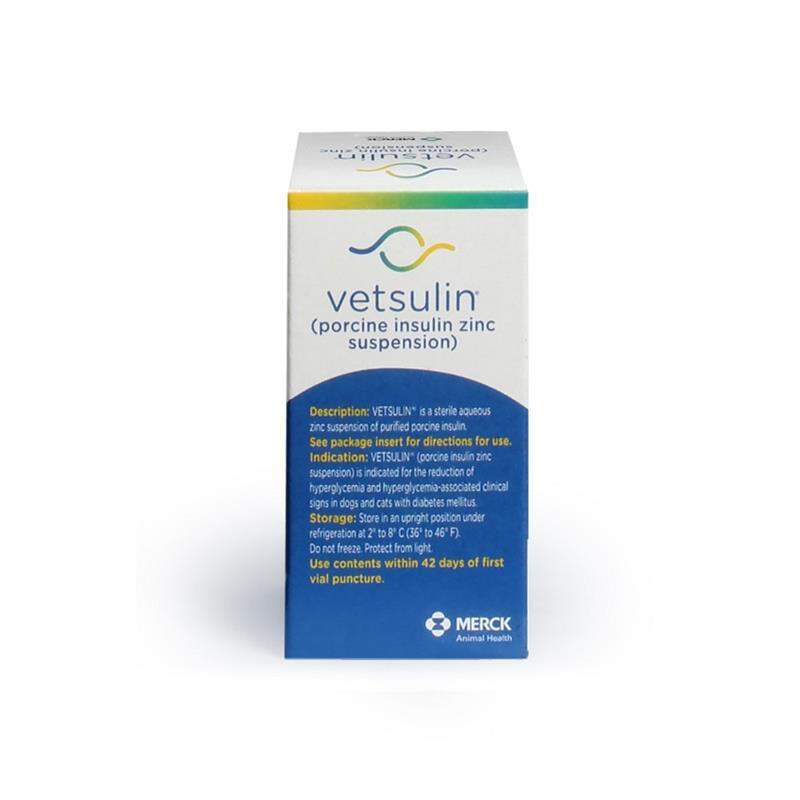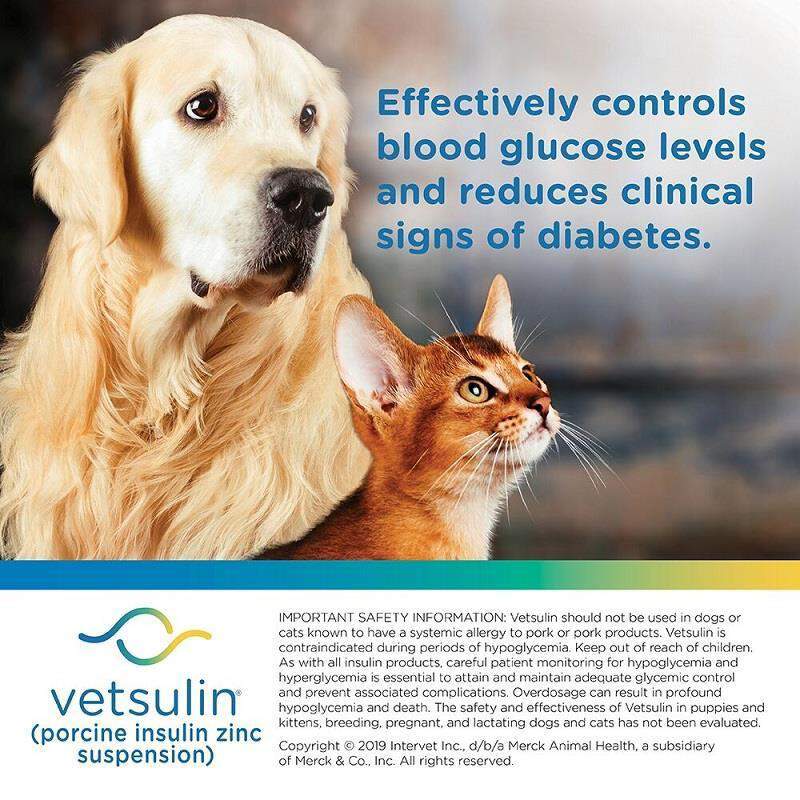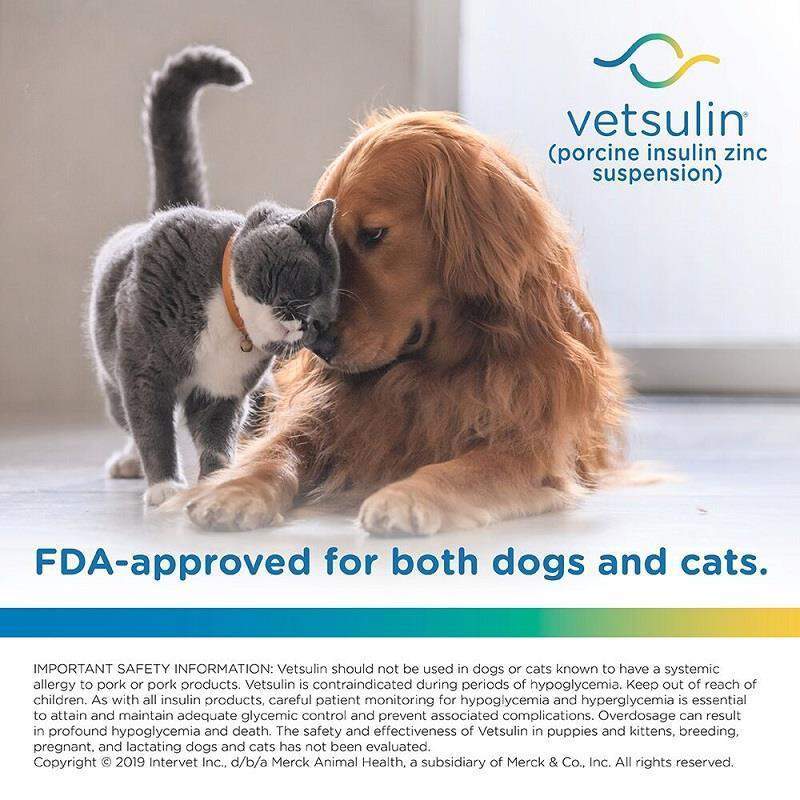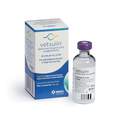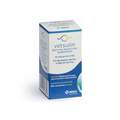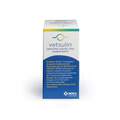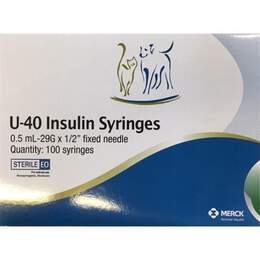

1 of 6
Click on image to open expanded view
Item No.
25897
Vetsulin Description
Vetsulin® (porcine insulin zinc suspension) is approved by the FDA to reduce hyperglycemia and associated clinical signs in pets with diabetes mellitus.
What is Vetsulin?
Vetsulin is an ideal insulin choice for your canine and feline patients with diabetes. It is an FDA approved prescription insulin manufactured by Merck Animal Health that is used to reduce hyperglycemia and hyperglycemia-associated clinical signs.
Which animals/pets is Vetsulin for?
For use in cats and dogs.
Vetsulin uses
Vetsulin® is the only insulin approved by the FDA for use in diabetic pets in the United States.
What does Vetsulin do?
- Porcine insulin has a similar amino acid structure to canine insulin. It is considered an intermediate acting insulin.
- Vetsulin® has two activity peaks after administration in dogs - one around 4 hours and another around 11. Activity duration varies, but is typically 14 to 24 hours.
- In cats, the activity peak occurs between 1.5 and 8 hours, and activity duration varies at 8 to 12 hours.
- Peak activity, activity duration, and required dose to adequately control diabetic symptoms will all vary between patients.
Vetsulin side effects
While rare, allergic reactions may occur. Immediately seek emergency veterinarian attention if your pet experiences such a reaction (including swelling of the face, tongue, or lips, hives, or difficulty breathing).
Other severe reactions may occur with or without warning. The most frequently-experienced insulin-related reaction is hypoglycemia (low blood sugar), which may cause the following symptoms:
Other severe reactions may occur with or without warning. The most frequently-experienced insulin-related reaction is hypoglycemia (low blood sugar), which may cause the following symptoms:
- Coma
- Seizures
- Staggering gait (incoordination)
- Lethargy
Vetsulin ingredients
Vetsulin® is a sterile aqueous zinc suspension of purified porcine insulin.
Vetsulin overdose: What to do?
- Immediately contact your veterinarian or closest in case of overdose
- rogestogens, certain endocrinopathies, and glucocorticoids can have an antagonistic effect on insulin activity
- Overdose can result in profound hypoglycemia and death
What to know before using Vetsulin
Stabilization with short-acting insulin and supportive therapy should be offered to animals who present with:
Incorrect dosing will occur if any syringe is used other than Intervet U-40 Insulin Syringes.
Vetsulin® should only be administered subcutaneously to cats and dogs.
- Anorexia
- Vomiting
- Lethargy
- Ketoacidosis
Incorrect dosing will occur if any syringe is used other than Intervet U-40 Insulin Syringes.
Vetsulin® should only be administered subcutaneously to cats and dogs.
How is Vetsulin sold?
Vetsulin® is supplied as a sterile injectable suspension in multidose vials containing either 2.5 mL or 10 mL of 40 IU/mL porcine insulin zinc suspension. Vials are supplied in cartons of one 10 mL vial and cartons of ten 2.5 mL vials.
Manufacturer
Merck Animal Health
Tips for using Vetsulin
Take time to carefully review the information sheet included with every prescription.
Overview
Vetsulin should be mixed by gentle rolling of the vial prior to withdrawing the dose from the vial. Using a U-40 insulin syringe, the injection should be administered subcutaneously, 2 to 5 cm (3/4 to 2 in) from the dorsal midline, varying from behind the scapulae to the mid-lumbar region and alternating sides.
Vetsulin for Dogs
The initial recommended dose of Vetsulin® for dogs is 0.5 IU insulin/kg body weight. This dose should be given once daily concurrently with, or right after a meal. Your veterinarian should re-evaluate your dog at appropriate intervals and adjust the dose based on clinical signs, urinalysis results, and glucose curve values until adequate glycemic control has been attained.
In the US clinical study, glycemic control was considered adequate if an acceptable blood glucose curve was achieved (reduction in hyperglycemia and a nadir of 60 - 160 mg/dL), clinical signs of hyperglycemia (polyuria, polydipsia, and ketonuria) were improved, and hypoglycemia (blood glucose < 50 mg/dL) was avoided. Twice daily therapy should be initiated if the duration of insulin action is determined to be inadequate.
If twice daily treatment is initiated, the two doses should be 25% less than the once daily dose required to attain an acceptable nadir. For example, if a dog receiving 20 units of Vetsulin® once daily has an acceptable nadir but inadequate duration of activity, the Vetsulin® dose should be changed to 15 units twice daily.
Further adjustments in dosage may be necessary with changes in the dog's diet, body weight, or concomitant medication, or if the dog develops concurrent infection, inflammation, neoplasia, or an additional endocrine or other medical disorder.
Vetsulin for Cats
The initial recommended dose of Vetsulin for cats is 1 to 2 IU per injection. The injections should be given twice daily at approximately 12 hour intervals. For cats fed twice daily, the injections should be given concurrently with, or right after each meal. For cats fed ad libitum, no change in feeding schedule is needed.
Your veterinarian should re-evaluate your cat at appropriate intervals and adjust the dose based on clinical signs, urinalysis results, and blood glucose curve values until adequate glycemic control has been attained.
Further adjustments in dosage may be necessary with changes in the cat's diet, body weight, or concomitant medication, or if the cat develops concurrent infection, inflammation, neoplasia, or an additional endocrine or other medical disorder.
Main Ingredients
Vetsulin is a sterile aqueous zinc suspension of purified porcine insulin.
Each mL contains:
- 40 IU of purified porcine insulin (30% amorphous and 70% crystalline)
- Zinc (as chloride): 0.08 mg
- Sodium acetate trihydrate: 1.36 mg
- Sodium chloride:7.0 mg
- Methylparaben (preservative): 1.0 mg
pH is adjusted with hydrochloric acid and/or sodium hydroxide.


